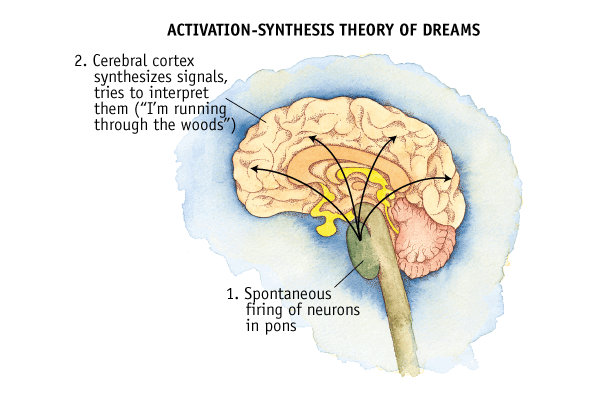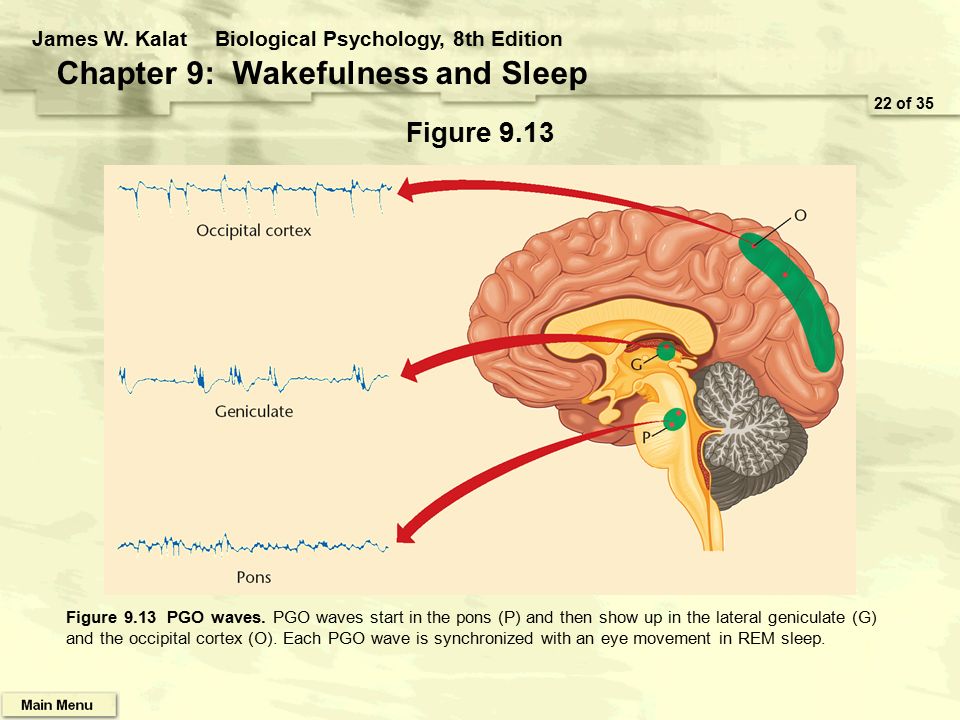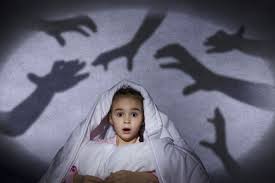Yes, “dreams can come true” as the song goes, those in your waking life when building castles in the air and also those in your sleep–which is the subject matter of another write-up altogether… But where do dreams in your sleep come from?

( Dreams Activation Synthesis Theory – Image Courtesy of www.macalester.edu )
When do Dreams Happen?
There are 2 stages of your sleep, NREM (Non Rapid Eye Movement) and REM (Rapid Eye Movement), which occur in that succession. REM sleep takes up just about 25% of your sleep as an adult, and a whooping 80% of your dreams actually take place in this stage (which is incident in the last third of your sleep). NREM sleep (which has 3 levels: N1, N2, N3) takes up a good 75% of the sleep in adults, but only about 20% of your dreams will occur in the NREM stage.

( Wakefulness and Sleep – Image Courtesy of slideplayer.com )
Dream Recollection: How to Remember your Dreams
And the plot thickens… It has been shown that it is much easier and more likely for you to remember the dreams that occur in your REM sleep compared to the dreams that occur in your NREM sleep. Further, should you be woken up suddenly while you’re still in your REM sleep, you will also find it easier to recollect your dreams, even so, more than you would recall were you to make an effort to remember your dreams when waking up in the morning while leaving your bed.
Comparing REM dreams with NREM dreams
REM dreams:
Dreams in your REM sleep are notably usually rather lucid, intense, or vivid; delusory, unreal, or illogical; unusual, incongruous, bizarre.
NREM dreams:
Though you’re more likely to remember your REM sleep dreams compared to NREM sleep dreams, your dream recollection of NREM dreams upon suddenly waking up (while in NREM sleep) is bound to be more lifelike, vivid, graphic, realistic.

( Dream Activation – Image Courtesy of www.macalester.edu )
Painting a Picture of your Dreams: Characteristics of Dreams
Do you dream in color, monochrome…what is the color scheme of your dreams? It should come as no surprise that most dreams typically occur in the natural colors, and are generally not monochrome or black and white; in fact, some dreams may be rather colorful and dazzling.
It goes further than just color, in that you do use all your 5 senses (vision, auditory, olfactory, palate and haptic) in your dreams. Just like some senses are used more often in real waking life (that is, visual and auditory more than tactile, smell then taste) so is the prevalence of usage in the dream life.

( Dreaming Asleep – Image Courtesy of www.thespiritualindian.com )
Those Bad Dreams called Nightmares…
Nightmares occur in some people, more frequently than in others, and with more severity or intensity of the Dream Anxiety Attack as they are otherwise referred to as. Just as the name suggests, nightmares — their intensity and incidence — tends to be greatly influenced by real life events that provoke worry and anxiety.

( Nightmares – Image Courtesy of www.dailymail.co.uk )
With regards to the correlation between age and nightmares, it is shown that nightmares are more common in children (highly prevalent at a young age) and typically set off from about 3 to 5 years of age when the child begins to experience bad dreams and even react fearfully in waking life through manifestations like fear of the dark, not wanting to sleep in their room alone, crying and screaming at night.

( Nightmares and Sleep Psychiatry – Image Courtesy of www.slideshare.net )
Nonetheless, nightmares, their severity, intensity and frequency do tend to gradually decrease with increase in age so that they’re more common in children than in the elderly.

( Child Nightmare Dreams – Image Courtesy of loudwire.com )

